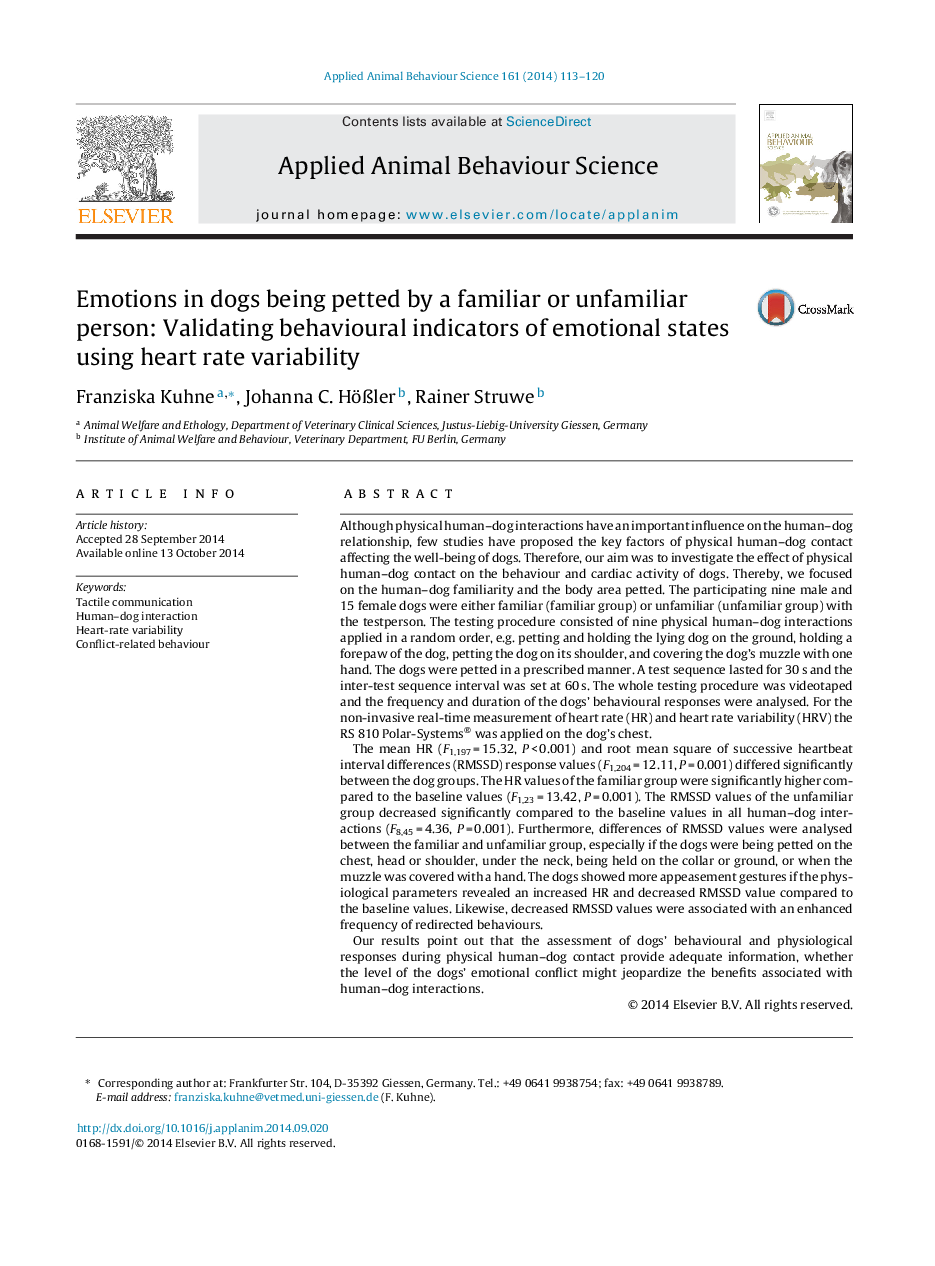| کد مقاله | کد نشریه | سال انتشار | مقاله انگلیسی | نسخه تمام متن |
|---|---|---|---|---|
| 4522519 | 1625345 | 2014 | 8 صفحه PDF | دانلود رایگان |
• We examine dogs’ behavioural and physiological responses being petted by humans.
• Dogs react with appeasement gestures mainly if being petted by a familiar person.
• Independently of the human–dog familiarity dogs response with a raised heart rate.
• A decreased parasympathetic tone is the main responses to an unfamiliar person.
• Dogs’ emotional responses might jeopardize the benefits associated with handling.
Although physical human–dog interactions have an important influence on the human–dog relationship, few studies have proposed the key factors of physical human–dog contact affecting the well-being of dogs. Therefore, our aim was to investigate the effect of physical human–dog contact on the behaviour and cardiac activity of dogs. Thereby, we focused on the human–dog familiarity and the body area petted. The participating nine male and 15 female dogs were either familiar (familiar group) or unfamiliar (unfamiliar group) with the testperson. The testing procedure consisted of nine physical human–dog interactions applied in a random order, e.g. petting and holding the lying dog on the ground, holding a forepaw of the dog, petting the dog on its shoulder, and covering the dog's muzzle with one hand. The dogs were petted in a prescribed manner. A test sequence lasted for 30 s and the inter-test sequence interval was set at 60 s. The whole testing procedure was videotaped and the frequency and duration of the dogs’ behavioural responses were analysed. For the non-invasive real-time measurement of heart rate (HR) and heart rate variability (HRV) the RS 810 Polar-Systems® was applied on the dog's chest.The mean HR (F1,197 = 15.32, P < 0.001) and root mean square of successive heartbeat interval differences (RMSSD) response values (F1,204 = 12.11, P = 0.001) differed significantly between the dog groups. The HR values of the familiar group were significantly higher compared to the baseline values (F1,23 = 13.42, P = 0.001). The RMSSD values of the unfamiliar group decreased significantly compared to the baseline values in all human–dog interactions (F8,45 = 4.36, P = 0.001). Furthermore, differences of RMSSD values were analysed between the familiar and unfamiliar group, especially if the dogs were being petted on the chest, head or shoulder, under the neck, being held on the collar or ground, or when the muzzle was covered with a hand. The dogs showed more appeasement gestures if the physiological parameters revealed an increased HR and decreased RMSSD value compared to the baseline values. Likewise, decreased RMSSD values were associated with an enhanced frequency of redirected behaviours.Our results point out that the assessment of dogs’ behavioural and physiological responses during physical human–dog contact provide adequate information, whether the level of the dogs’ emotional conflict might jeopardize the benefits associated with human–dog interactions.
Journal: Applied Animal Behaviour Science - Volume 161, December 2014, Pages 113–120
